Michael Bauer
Anthem
25.4. —
28.6.2009
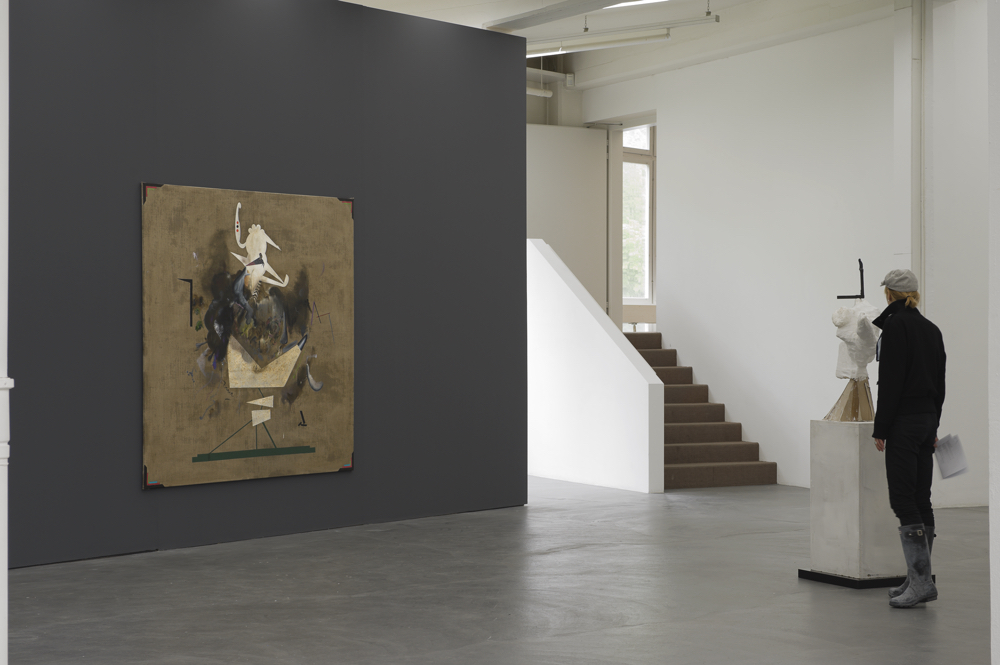
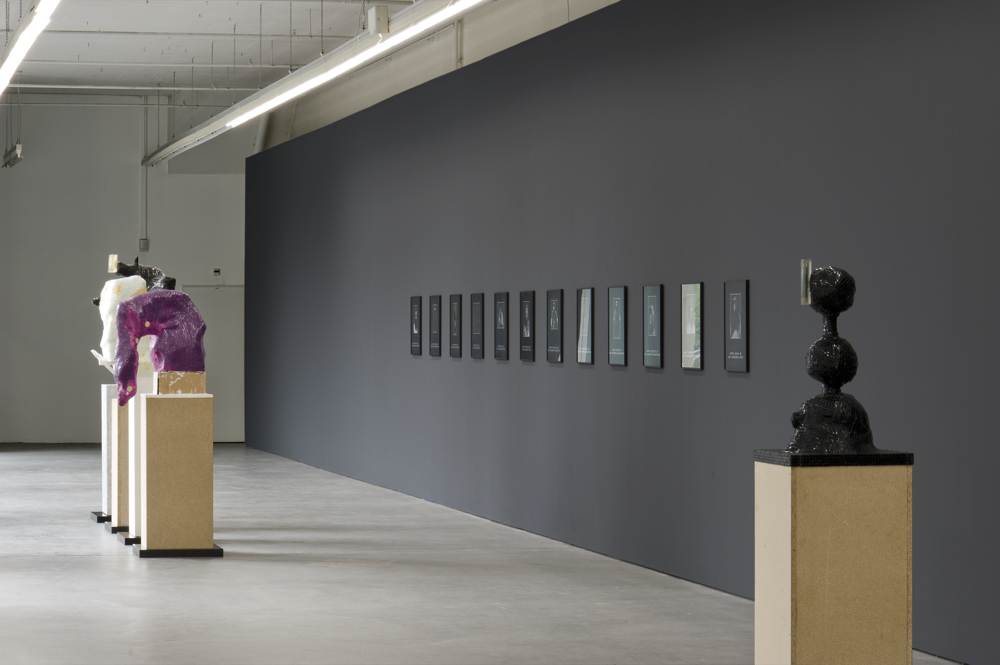
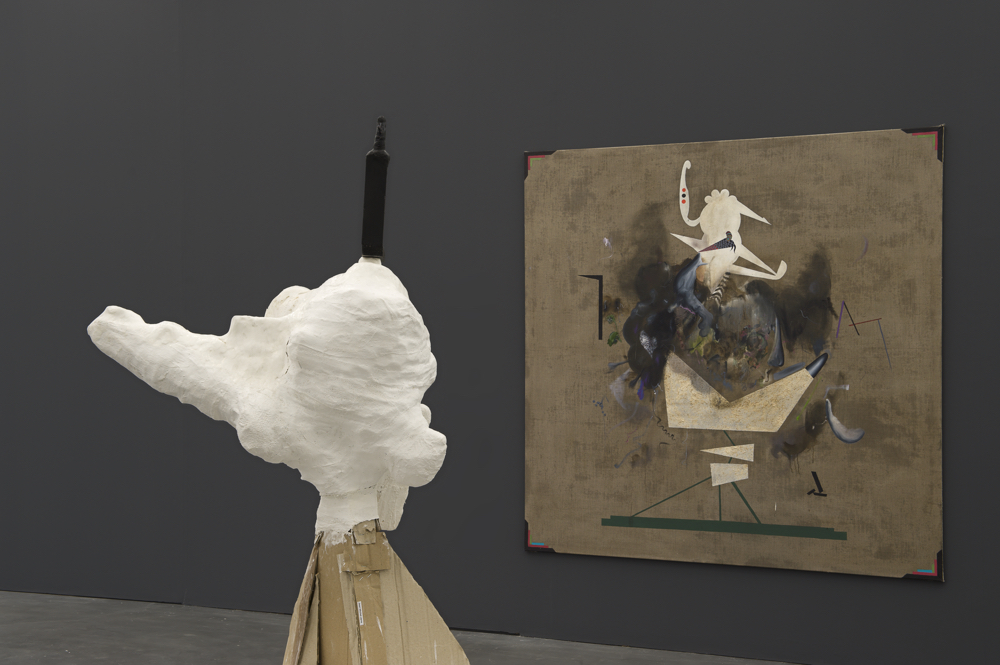
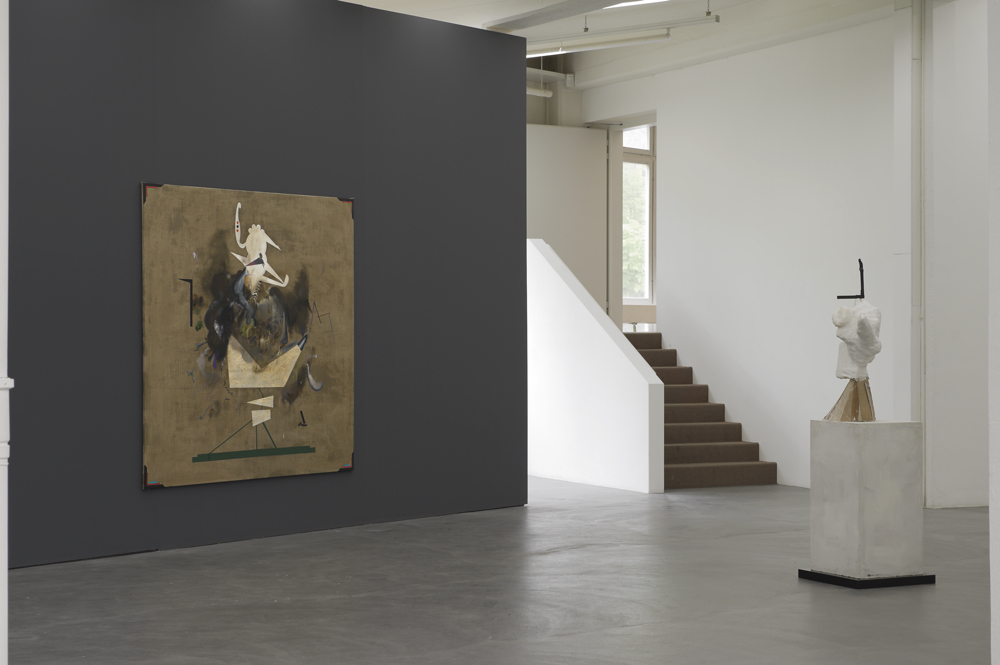
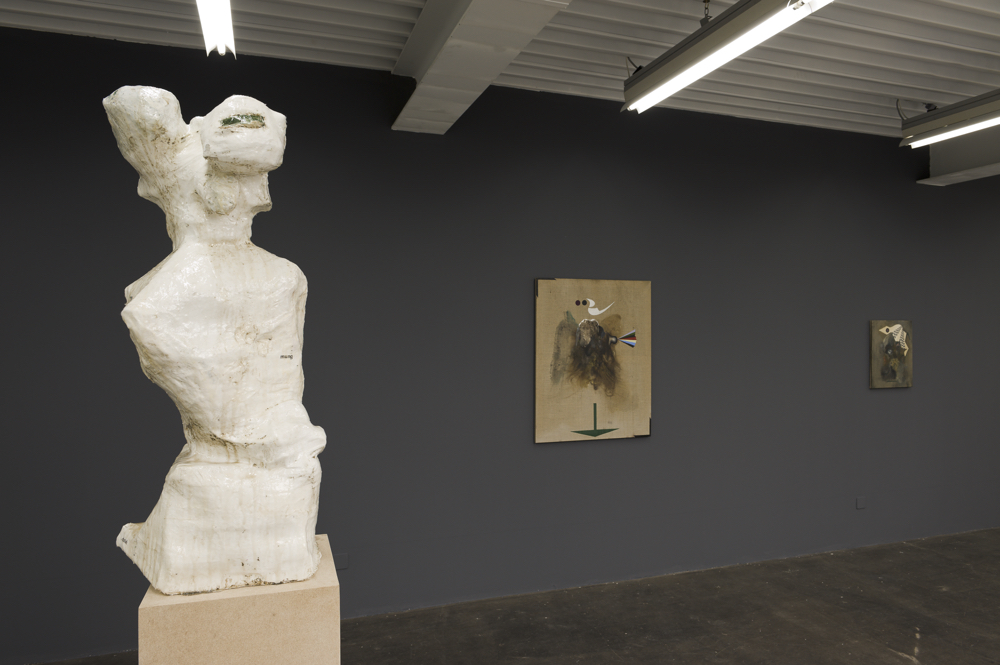
Anthem is the first institutional exhibition of Michael Bauer (born 1973 in Erkelenz/DE, lives and works in Cologne) in Switzerland. With the title, the artist already suggests that music has a great influence on his paintings, sculptures and drawings.
At first glance Michael Bauer’s works give the impression of stemming from imaginary worlds where phantasms, psychedelic elements and various moods meet and merge into temporary form. His compositions often look as though some of the ramifications might have taken another route; there is so much movement inherent in the works that the next move is already palpable. Graphic or geometric forms, circles and framing elements appear on mud-coloured ground with condensed areas and isolated swashes. Recognisable elements often appear within the overall composition. An eye here, or even a face, a hat there, a shower head discharging colours, testicles and penises, suggested harlequins, cigarettes, pipes and, repeatedly, table-tennis bats or lines that might have been taken from the green surface of a ping-pong table. When asked about the sexual parts in his paintings, one of the answers Bauer gives is: “I believe that the phalluses … are rather sad attachments, robbed of their original function. Like a last sad wave of virility” (Die Figur ist Legion, MB in an interview with Stefanie Popp, cat. Borwasser, JRP/Ringier, Zurich, 2008).
Like teasers, individual shapes attract the viewer’s eye and immediately direct it to the muddy or shady mêlée of grey-brown areas, where it would get lost but for the geometric, clearly structured elements. Chessboard-like figurations, striped bars or frames reminiscent of patterned borders, frame the paintings on the top and bottom and/or both sides. They interrupt the imaginary roaming and lead the viewer back to the here and now. Michael Bauer compares his paintings with movie trailers: “The thing that the mind does when it fills in the blanks of a film that one only knows fragments of… This teasing can very well be used in painting. Attractants, red herrings, a false sense of security” (Die Figur ist Legion, op.cit.). Bauer uses plinths in a way that this stop-mode also works for his sculptures to prevent anyone from getting too close in reality or in their imagination: “DJ Penize, for instance, consists of three plinths. The first carries the figure, the figure is the plinth for the ballpoint pen, and the latter is the plinth for the contact data of my tax advisor” (Die Figur ist Legion, op.cit.).
Bauer’s sculptures intrigue by their mix of materials, with a rough wooden or cardboard plinth, glass tiles and isolated everyday objects such as nicotine patches, rice cakes, pills cast in resin or said ballpoint pen. Like in his paintings, the artist often welds together abstract compositions with very literal objective components. Here, too, he plays with the relationship of closeness and distance between work and viewer. Together with Robert Kraiss and Florian Gass, Michael Bauer constitutes the Ylmaz House Band, whose music fellow artist Stefanie Popp describes as the “billowing sensation of the bloodstream in your veins, or, perhaps, digestive peristalsis.” The singing she defines as coming “from very deep down inside… Like the unconscious turned into sound. Or the freely flowing inner pulp” (op. cit.), and thus cleverly hits the point where music and visuals meet. “With their irrepressible lack of rationale, Bauer’s paintings, drawings and sculptures keep telling us: you cannot rehearse a painting or an emotional reaction, and you cannot expect that the materials or your imagination will always do your bidding. A painting never is and never was an explanation — and it will always want to conceal as much as it reveals” (Begin Again, Jennifer Higgie, cat. Borwasser, op. cit.).
Text by Sabine Schaschl